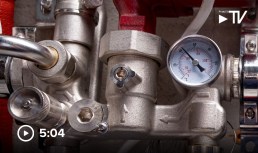The current estimate was calculated using a more thorough data set than what was available last month for the second estimate, which also came in at 6.4 percent.
According to the report, the increase in real GDP in the first quarter “reflected increases in personal consumption expenditures (PCE), nonresidential fixed investment, federal government spending, residential fixed investment, and state and local government spending that were partly offset by decreases in private inventory investment and exports. Imports increased.”
The increase in PCE showed a rise in durable goods, which was led by motor vehicles and parts. Non-durable goods were also up, which was led by food and beverages, along with an increase in spending on services, led by food services and accommodations, according to the BEA report.
The PCE price index rose 3.7 percent this quarter, reflecting an increase over the fourth quarter’s 1.5 percent increase. Core PCE, which is calculated without food and energy prices, was up 2.5 percent. The fourth quarter showed an increase of 1.3 percent.
An increase in equipment spending led the boost in nonresidential fixed investment — led by information processing and intellectual property like software. Goods production in the private industry sector went up 5.4 percent, while services-producing markets went up 7.7 percent, according to the report.
Advertisement: Scroll to Continue
New York Fed leader John Williams said at last week’s Federal Open Market Committee (FOMC) meeting that since the economy is still rebounding from the pandemic, the U.S. Federal Reserve shouldn’t end support. Fed officials Robert Kaplan of the Dallas Fed and James Bullard of the St. Louis Fed said that it might be too late the change the trajectory of the Fed’s strategy.
Deutsche Bank economists upwardly revised its February GDP forecast for 2021-22 based on the assumption that the $1.9 trillion pandemic relief package would be passed by both houses of Congress.




